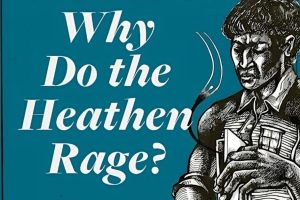Bren Ortega Murphy and Michael Whalen’s fascinating documentary, A Question of Habit, screened to a standing-room-only audience last month at Loyola University Chicago. The crowd of students, present and former women religious, professors Jesuit and otherwise, and many others applauded the film’s contrast of real women religious of today with their image in pop culture—particularly the flood of “nun kitsch” which has apparently grown in inverse proportion to the number of nuns actually ministering in the U.S.
Narrator Susan Sarandon (who won her Oscar starring as Sr. Helen Prejean in the film Dead Man Walking) told viewers that sisters who served as nurses during the Civil War temporarily cooled the anti-Catholicism in U.S. society, as the veterans never forgot their faithful care. Although sisters opened settlement houses for the poorest of the poor, started fully half of the Catholic institutions of higher learning in this country, and even pioneered an early form of health insurance on the frontier, they are largely ignored in histories of Catholicism in America. They were many of the first women to earn Ph.D.s, and even helped to found the National Organization for Women before the group took its current position on legalized abortion.
Yet today many encounter nuns most often in the wind-up ruler-wielding Nunzilla doll, on a cocktail napkin as “Sister Mary Manhattan,” or in nun pornography (which it turns out is not a modern phenomenon at all). The film also surveyed the portrayal of nuns in film and on TV from the 1940s on, when Catholic culture went mainstream, sorting the well-rounded portraits from the bizarre or childish (think Sally Field in The Flying Nun). Theologians, historians, and women religious attempted to sort out what’s at the heart of this fascination with the figure of the nun in habit.
The discussion afterward was almost as fascinating as the film. Religious studies professor Robert Orsi, invited from nearby Northwestern, explored the contradiction between the enormity of sisters’ contribution to the church and their current portrayal in the culture, suggesting that because our society is terrified of transcendence, we must trivialize the figure of the nun, who symbolizes it. He also cautioned against the temptation to whitewash what was a very real dark side to some sisters: their contributions to racial and class discrimination, the unrestrained cruelty of some nuns to children or others in their care. Why were they allowed to act out their anger, he wondered, and what were the sources of their distress?
Sisters and ex-sisters in the audience talked at length about the habit, then and now: Covering up one’s sexuality with a habit gave a woman the freedom to go anywhere, made her untouchable, said one. Another said that early in her convent years she realized that the habit gave her a privilege she hadn’t really earned; still another said it made people think they knew what she thought, and who she was, even though she didn’t really know those things herself. Many wondered how it developed that priests could always take a break from their clerical garb (priests out golfing; Bing Crosby in his St. Louis Browns sweatshirt in the 1944 film Going My Way), but nuns could not.
Bren Ortega Murphy, who teaches communications at Loyola University Chicago, as of the September showing had not nailed down a distributor for the film, but said she is happy to take it around for screenings with followup discussions.













Add comment